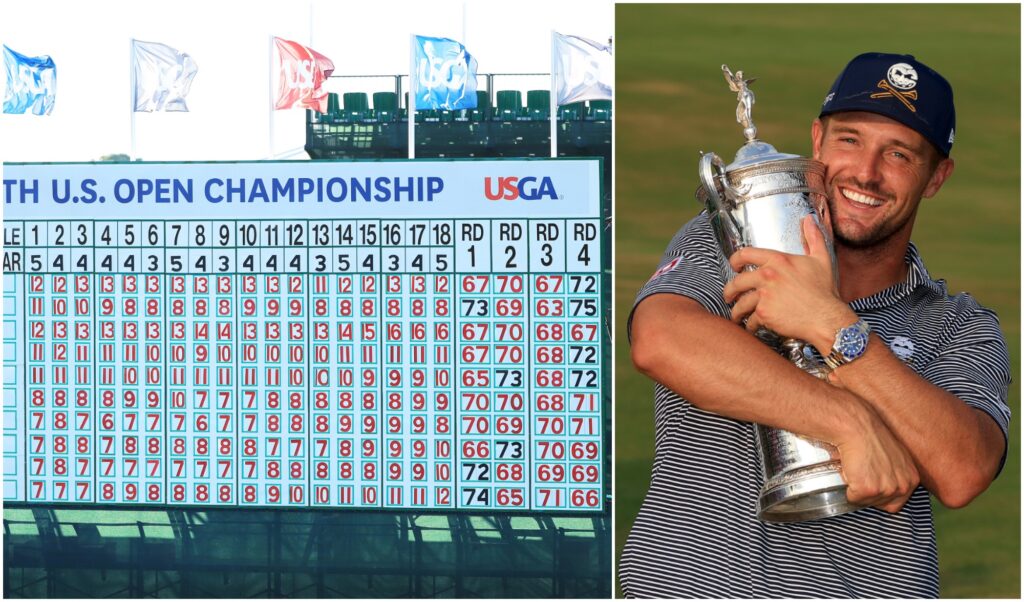The Changing Landscape of the US Open: Is It Still Golf’s Toughest Test?
The US Open has long been heralded as one of golf’s most challenging tournaments, often considered the ultimate test of skill and perseverance on the links. Traditionally, the United States Golf Association (USGA) has set the stage for this major championship with punishing rough, narrow fairways, and fast greens, creating an environment where par is a commendable score for even the best players in the world. But recent scoring trends suggest that the US Open may not be as daunting as it once was. Is this a sign of a shifting paradigm in golf?
As players prepare for the upcoming US Open at Oakmont Country Club, known for featuring the longest par 3 and par 5 in tournament history, spectators can expect a tough week. Boasting deep, intricate rough and slick greens, Oakmont is a venue that promises to challenge even the most seasoned golfers. This begs the critical question: Is the US Open still the toughest major in golf?
The essence of US Open golf lies in its uniquely rigorous setup—tight fairways demand precision off the tee, while quick greens require extraordinary touch and finesse. The USGA has historically aimed to make par an admirable achievement, a standard that has perpetuated the notion that this tournament represents the pinnacle of golfing difficulty. Yet, a look at recent winner statistics shows a surprising trend towards lower winning scores.
In the aftermath of World War II, a mere 14 of the first 34 US Open champions finished under par, with an average score that hovered around +7. This narrative began to shift in 1980, marking the start of 26 consecutive years in which winners scored par or better. Over the last four decades, only five of the last 45 champions have finished over par, suggesting a clear evolution in player performance and course management strategy.
Notably, Tiger Woods changed the game forever with his historic 12-under-par winning score at Pebble Beach in 2000. Such performances signified a turning point where players began to achieve double-digit under-par scores, a feat previously unheard of in the history of the US Open. As a result, the average winning score in ensuing years dropped to 2.35 under par, highlighting advancements in both player fitness and equipment technology.
The past 25 years have seen an even more pronounced shift. Previously characterized by an arduous battle against the elements, the US Open has now become a platform for explosive scoring. Players such as Rory McIlroy and Brooks Koepka, who each posted winning scores of 16 under par, have redefined expectations, making it appear that the US Open may be slightly more accessible than in decades past.
While it is true that winning scores have tended to trend lower, the broader narrative remains complex. Despite the emergence of a handful of players capable of carving up the course, the field overall has often struggled. In the past two decades, more than 30 players have finished under par in only two events—a stark contrast to previous decades where even small missteps could ruin a player’s chance of winning.
Moreover, the remarkable victories of athletes like Martin Kaymer and Bryson DeChambeau, who each found success at extremely challenging venues, underscore the tightrope walk between scoring potential for the elite and the struggle for the rest of the field. Kaymer’s nine-under-par meant he was one of only three players in red figures during his championship, while DeChambeau was the sole contestant at Winged Foot to finish under par in 2020.
Analyzing the past 14 US Opens since 2010, champions averaged an impressive -94, or about 6.7 under par each. However, only 145 participants finished the week under par, achieving an average of just 10 out of approximately 156 top competitors reaching the threshold. This indicates that while the elite have found pathways to lower scores, the overall challenge of the US Open persists unabated.
The last five years have presented an even tougher environment, with only 48 out of 768 players breaking par. This indicates a wider performance gap, suggesting while winners enjoy more access to scoring opportunities, the majority of competitors still face an extraordinary challenge. The fact that winning scores are trending lower while overall player scoring remains high showcases how nuanced and layered the US Open truly is.
In summary, while it may appear that recent US Open scores suggest a more manageable challenge at the top of the leaderboard, the reality is multifaceted. The US Open retains its reputation as one of golf’s toughest tests, compelling competitors to navigate complex conditions and formidable competition. The lower scores reflect a combination of player talent, physical conditioning, and technological advancement, yet they also reveal the enduring difficulty that this championship represents.
As we look forward to the upcoming tournament, it will be fascinating to see how players adapt to the demanding landscapes of Oakmont and strive to etch their name in the annals of US Open history. While scoring may evolve, one truth prevails: the US Open remains an essential crucible for testing golf’s greatest talents.


